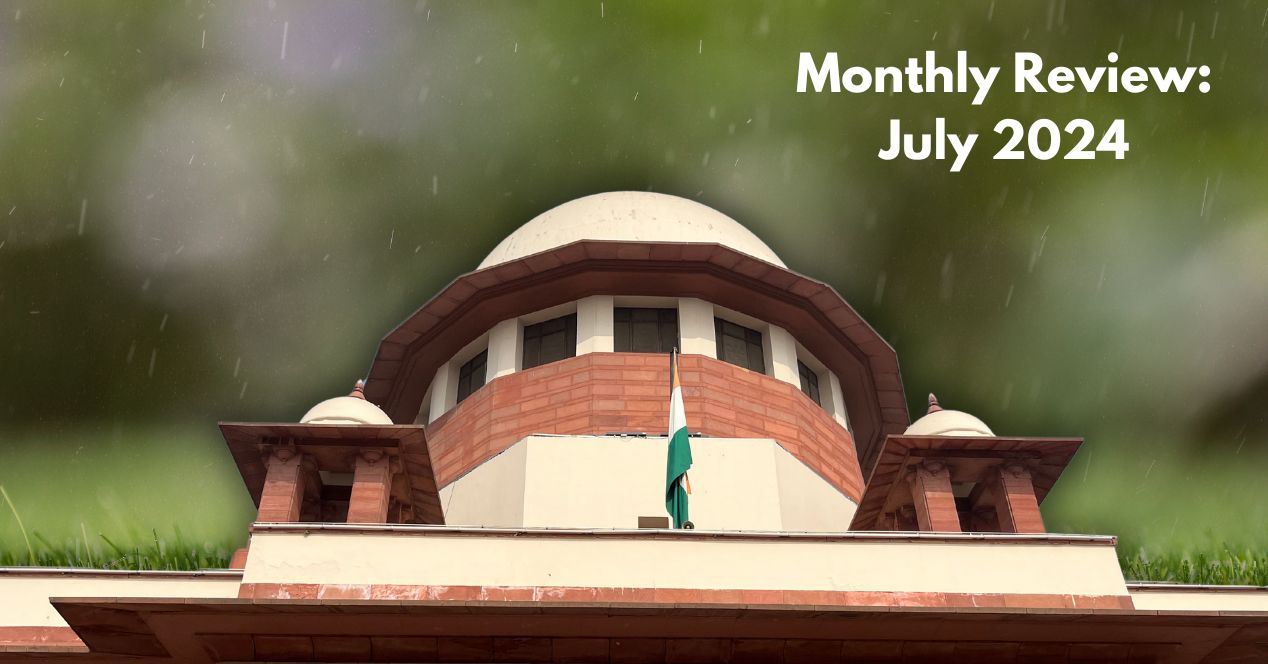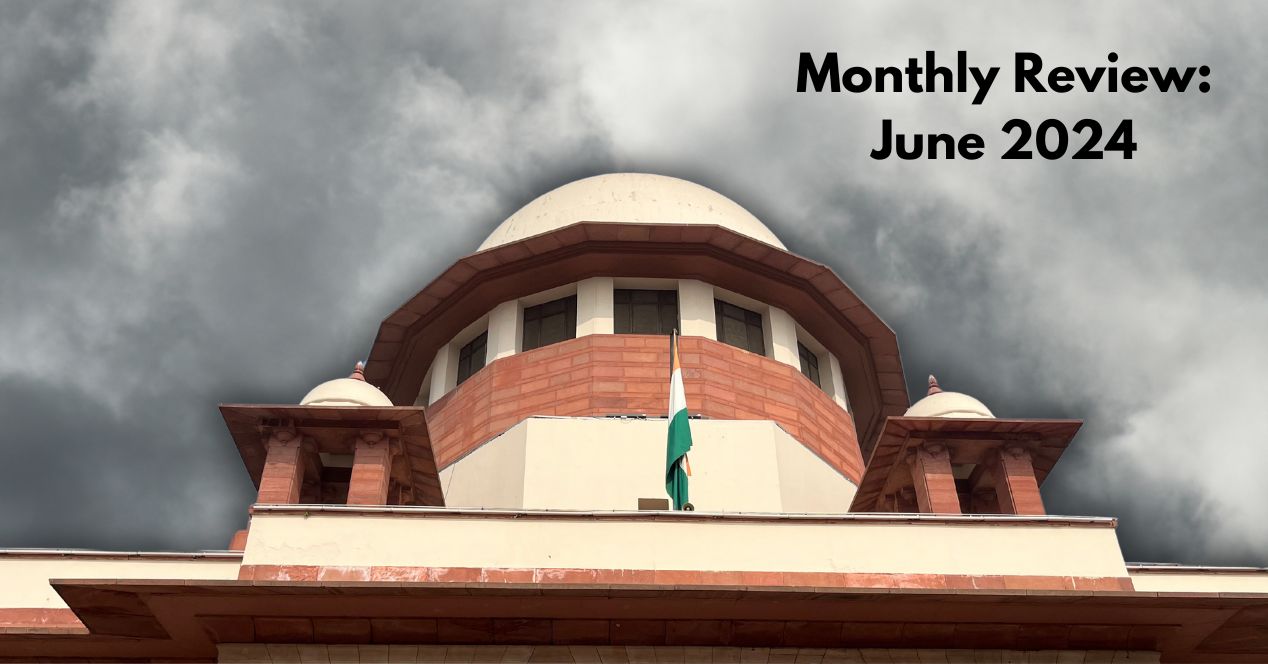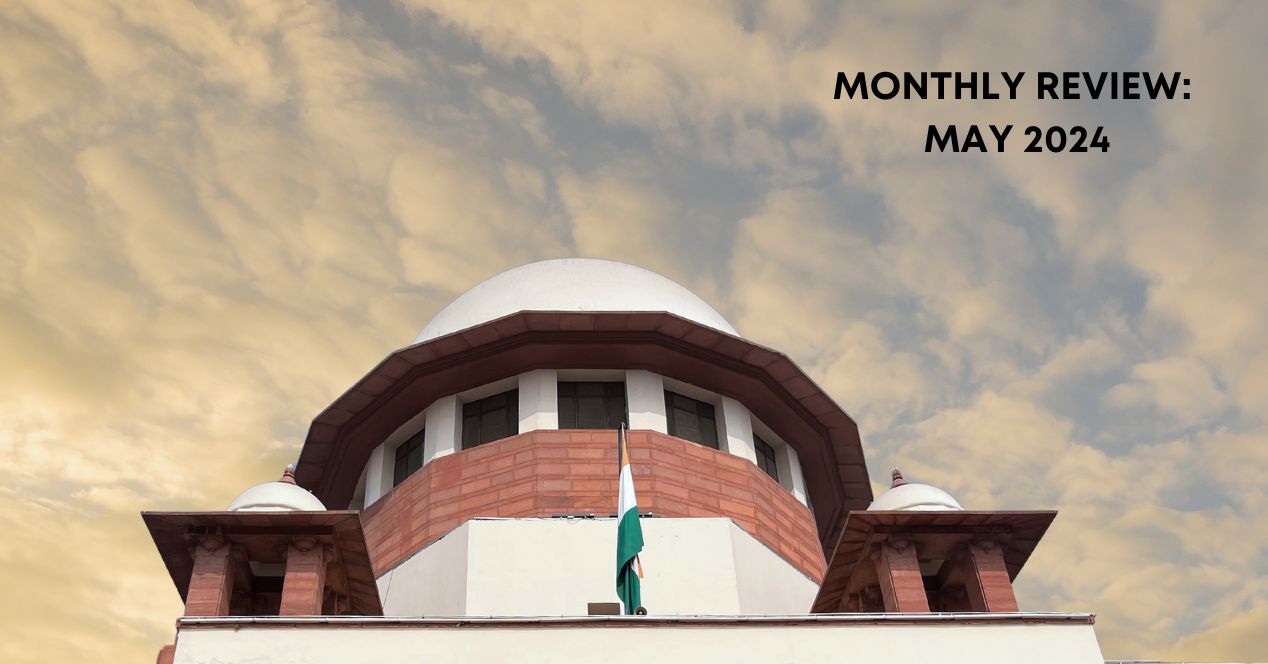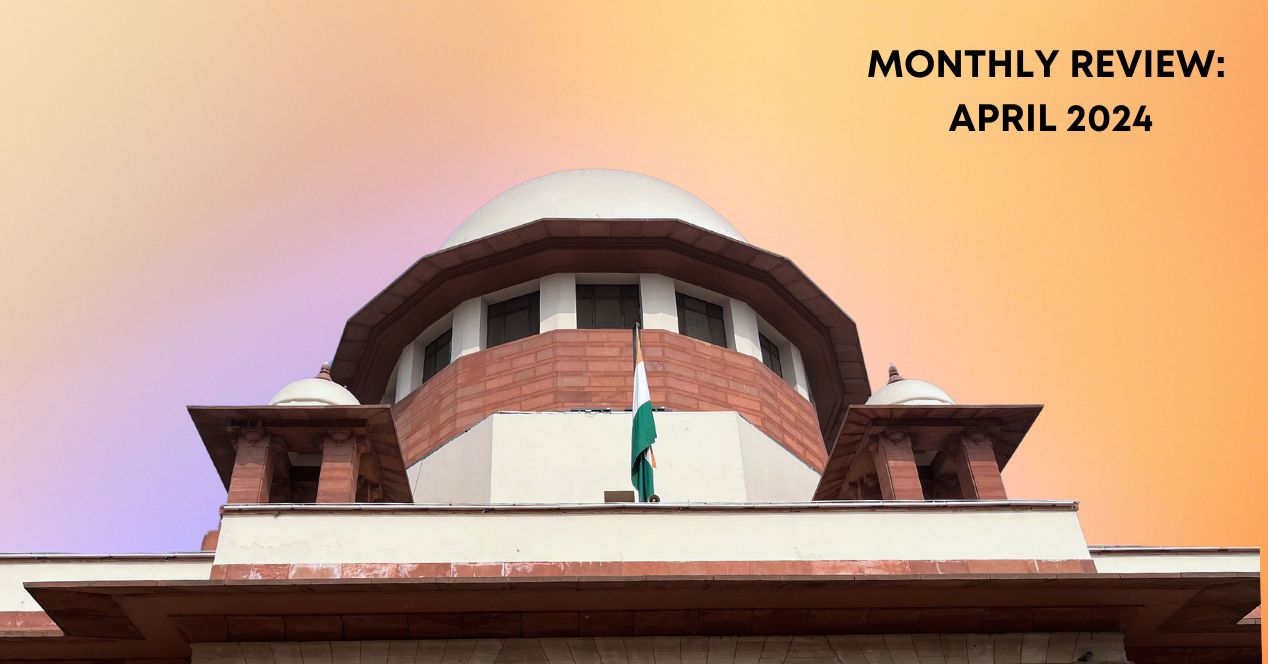Analysis
Monthly Review: August 2024
Constitution Bench cases on affirmative action, mining taxes, arbitration and driving licences dominated the Court’s docket in August
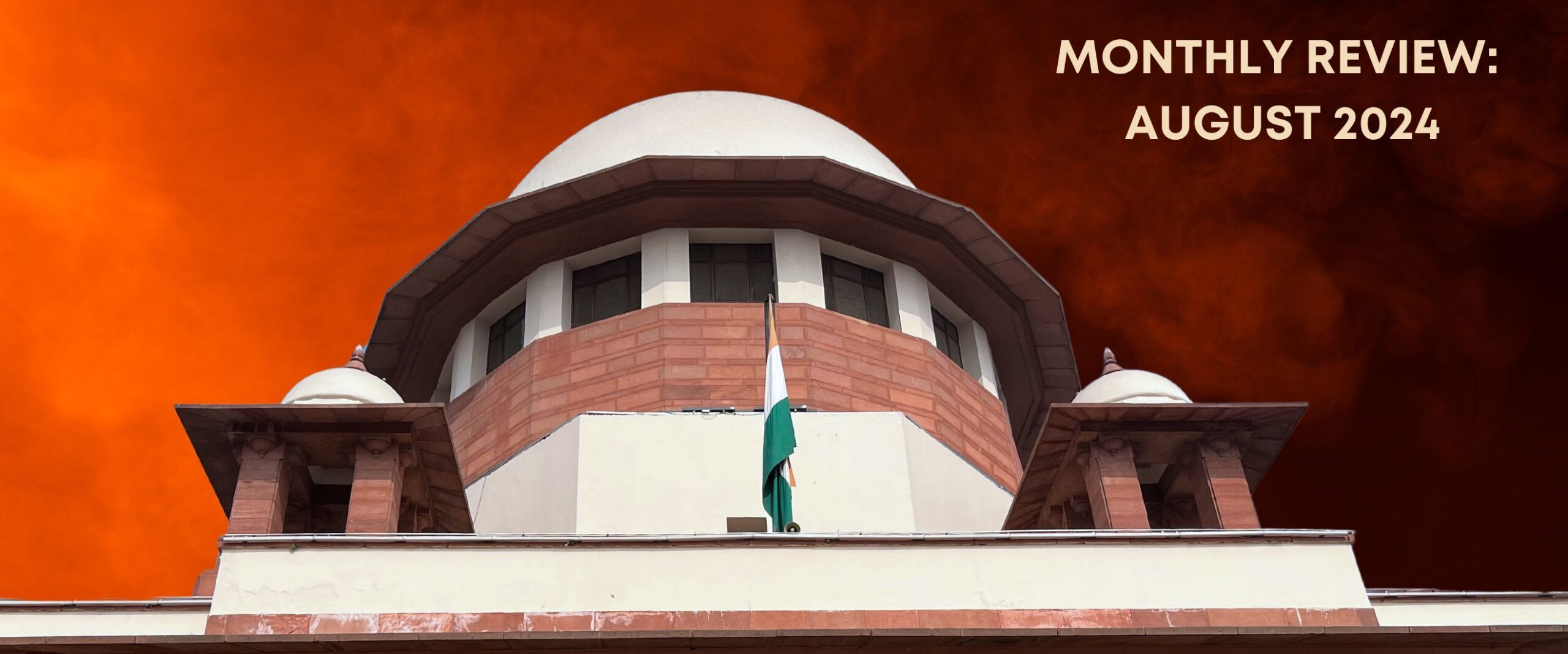
As the long summer days of July bled into August, the Supreme Court wrapped up a key constitution bench case which substantially altered the court of affirmative action in India. The month opened with a Constitution Bench decision that sub-classifications for the SC/ST categories were allowed. The Court added that individual states could do so based on empirical data.
In mid-August, the Court clarified that a nine-judge bench decision to uphold states’ power to collect tax on mines and minerals would apply retrospectively. The outcome—trillions of rupees of transactions, potential instability in India’s mining sector.
Manish Sisodia finally got bail, and the Court reserved its decision on a motor vehicle case that will likely affect thousands of gig workers and drivers.
Horrors from Kolkata shook the nation and the Court refused to stay silent.
Supreme Court Observer’s monthly review for August 2024 goes through the highlights of the month.
SC allows sub-classification for SC/ST reservations
The month started off with one of the biggest reservation-related judgements of the decade—State of Punjab v Davinder Singh. In this case, the Court allowed states to create sub-categories within its Scheduled Castes and Scheduled Tribes (“SC/STs”). The judgement overturned E.V. Chinnaiah v State of A.P. (2004), which held that sub-classification with the SC/ST groups was impermissible.
The Court recognised that the inclusion of castes within the Presidential List of 1950 did not imply that their social conditions were all alike. Since some castes were more backward than others amongst the SC/STs, sub-classifying them could create better outcomes in ensuring “substantive equality” than treating them all the same.
The Court also said that the power to create sub-classifications could be exercised by the states. They held that creating subclasses did not amount to “tinkering” with the Presidential List, which only Parliament could do. This is because the Court interpreted “tinkering” as including new castes or taking them out from the list entirely—not creating categories within existing groups.
Sub-classifications, the Court held, must be based on empirical data and are susceptible to judicial review.
In the aftermath of the judgement, Dr. Anup Surendranath, Prof. of Law at NLU-Delhi, stated that while the Court settled doubts around ‘efficiency’ as a limitation to reservations, its approach to methodology & creamy layer raise questions. Read his commentary here.
SC uses its suo motu powers in Kolkata rape and murder case
In the aftermath of the rape and murder of a doctor in RG Kar Hospital, Kolkata on 9 August, the Supreme Court exercised its suo motu powers on 18 August to hear the case directly. The matter required urgent attention, given the heinousness of the crime, and the protests of doctors across the country.
The Court set up a national task force to create protocols that would keep doctors safe. The task force will submit an interim report by 8 Sept 2024 and a final report by 18 October 2024.
Assuring the doctors to “trust” them, the Court urged the protesting doctors to return to work to ensure that those needing medical assistance were attended to. “Justice and medicine can’t go on strike,” the Chief Justice said. The Court then asked hospital authorities and the West Bengal government to not take coercive action against doctors that had protested.
The Court’s words of assurance towards the doctors were matched by an equally stern tone towards the West Bengal government and Kolkata police. It castigated the police for not protecting the hospital—a crime scene—from a mob that had formed around the building after the incident. The Court also criticised the delay in filing an FIR at 11:45 pm on 9 August, long after the murder and postmortem biopsy took place.
Some have criticised the Court’s involvement in the case, but it may be cynical to view the Supreme Court’s suo moto cognisance of the Kolkata rape and murder case merely as an optics game. More here.
Bills, Bills, Bills: SC says mining companies must pay back taxes to states
After the Supreme Court upheld the validity of taxes levied by states against mining companies for mineral rights, the question remained: did states have the right to collect taxes from 1990, the year India Cement v State of Tamil Nadu was decided? Or would it only apply to transactions entered into going forward?
Eight judges of the nine-judge bench issued an order that made mining companies’ worst fears come true. The judgement would apply retrospectively which meant that mining companies would have to pay arrears amounting to about 1.5 trillion rupees. The potentially devastating effects of the judgement were curbed somewhat by allowing states to collect taxes levied after April 2005, not 1990. Mining companies were given another reprieve when the Court decided that payments would only have to start being paid in April 2026, in instalments over 12 years.
“Delay”-dallying
If any Supreme Court case produced one of the sound-bites of the month, it would be the Manish Sisodia bail hearing. The bench, consisting of Justices K.V. Viswanathan and B.R. Gavai wrote “bail is the rule, jail is the exception” to sum up what ought to be the general approach to granting bail for courts across the nation.
It was a long time coming for Sisodia, who had been in jail for 17 months for his involvement in the Delhi Liquor Policy case. Sisodia had his bail petitions rejected several times: by a Delhi trial court on 28 April 2023 for his ED case, by the Delhi High Court on 30 May 2023 for his CBI case, by the Delhi HC for his ED case on 3 July 2023, and by the Supreme Court on 30 October 2023 for both cases, by a Delhi trial court for the second time on 30 April 2024, and by the Delhi High Court a second time on 21 May 2024.
The Supreme Court had initially rejected bail for Sisodia last October, based on the assurances by lawyers that Sisodia’s trial in the case would commence within six to eight months. 10 months later, and with no trial on the horizon, the Court finally put an end to the long drawn investigation and hearings, which Sisodia will have to go through again when the trial in the CBI and ED cases finally begin.
Drivers await Court’s say on validity of their licences
With amendments to the Motor Vehicle Act, 1988 (“MVA”) to be voted on by Parliament soon, Chief Justice D.Y. Chandrachud decided to hear a case clarifying language in the Act to prevent litigation from starting over after the passage of the amendments. Specifically, the Court is deciding whether licence holders for a light motor vehicle (“LMV”) need a separate licence for vehicles weighing less than 7,500 kilograms. On 21 August 2024, the Court reserved judgement in the case.
Insurance companies argued that other provisions in the MVA, such as age limit and the content of the licence, show that Parliament intended to have LMVs and transport vehicles be treated differently. LMVs had a lower eligibility criteria compared to transport vehicles which required drivers to go through safety and medical aid training. Additionally, LMVs were fundamentally different from transport vehicles, with LMVs being driven for shorter time periods, over shorter distances, and posing less of a threat to pedestrians.
The Union argued that when the MVA was first drafted, it had created categories of “heavy vehicles” weighing over 12,000 kilograms and “medium vehicles” weighing between 7,500 and 12,000 kilograms. The “heavy” and “medium” vehicle labels were later scrapped, and the categories merged to form the singular “transport vehicle”. This would mean “transport vehicle,” in a legal sense, only meant those vehicles above 7,500 kilograms. This allowed for vehicles below 7,500 vehicles, including transport vehicles (in the casual, not legal, sense) that met that definition, to be treated on par with other vehicles of that weight.
Arbiters of justice decide on arbitration issues
Towards the end of the month, the Supreme Court heard arguments on whether an individual who was ineligible to arbitrate a case could elect an arbitrator in their stead? And was it permissible to unilaterally elect a panel of arbitrators? On 30 August 2024, the Court reserved judgement in the case.
Representatives for private companies argued against election by ineligible people and the unilateral creation of a panel. They argued that arbitrators not only had to be impartial, but also have the appearance of impartiality. That appearance would be shattered by allowing unilateral appointments. To add to that, ineligible persons had their authority as arbitrators cut off by Section 14(1)(a) of the Arbitration Act (1996).
On the other side was the Union government, arguing in favour of unilateral appointments and election by ineligible people. Citing Voestalpine Schienen v Delhi Metro Rail Corporation (2017), the Union government argued that it was possible to “instil confidence in the mind of the other party” through a unilateral appointment if the panel of arbitrators was “broad-based”. Such was the case in many instances of online dispute resolution. The government went even further, saying advertisements could encourage people to apply to be arbitrators. Yet the Court raised concerns over whether such a panel could exercise good faith, and whether the Court should get its hands tied in private law at all.
The Union government also argued that the Arbitration Act was, by its nature, grounded in party autonomy—one cannot be subject to arbitration without first contracting to subject themselves to it in the first place. So even if rights in arbitration were not equal, both parties would have exercised their autonomy by being in arbitration anyway. This would include arbitrations where the process of selecting arbitrators was decided in advance.
Two’s company, but three’s a crowd?
30 August was Justice Hima Kohli’s last working day at the Supreme Court. Her retirement leaves just two women justices on the Supreme Court: Justices B.V. Nagarathna and Bela Trivedi. In three years as a judge of the top court, Justice Kohli authored 40 opinions.
To see a breakdown of Justice Kohli’s most notable judgements, click here. To get a sense of how Justice Kohli’s tenure looked in numbers, click here.
Celebrations for the Supreme Court’s 75th year continue
We’ve published two new stories in our special series commemorating 75 years of the Supreme Court!
To learn more about public-interest litigation, warts and all, read advocate Gulnar A. Mistry’s piece on PIL’s origins, noble intentions, and evolution into a “confused and intimidating jurisprudence” here.
To take a trip back to 1950 and learn about the first eight judges of the Supreme Court, read associate editor R. Sai Spandana’s introduction to the life and times of the Kania court here, where you can also read more about the judges individually.
SCO began celebrating the Court’s 75th year at the tail-end of June, publishing articles like the PIL piece and the portrait of the first Supreme Court bench. To see some of the other projects that SCO contributors have made in view of the occasion, including articles on the Court’s architecture, its first decisions, and its portrayal in cinema, click here or watch associate editor Gauri Kashyap’s video for a quick rundown.

